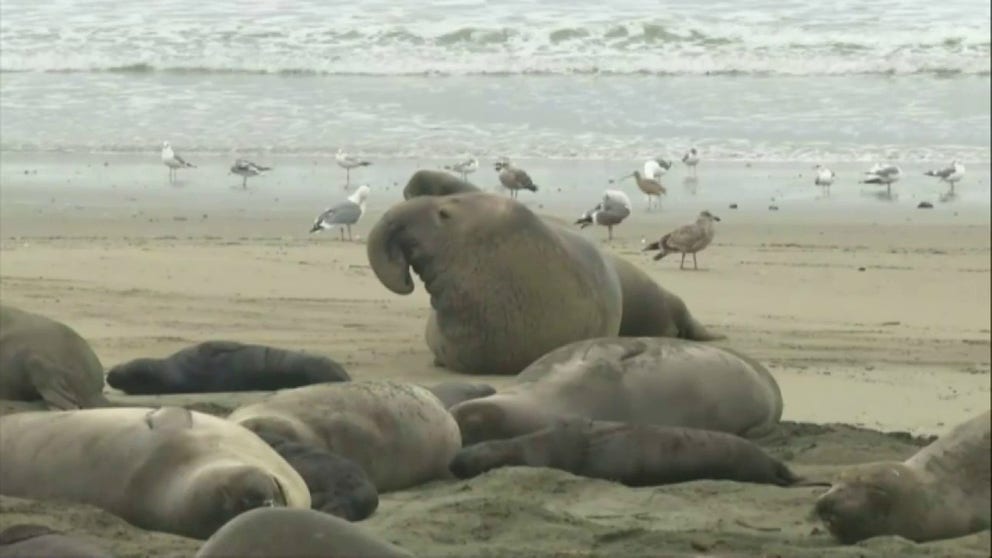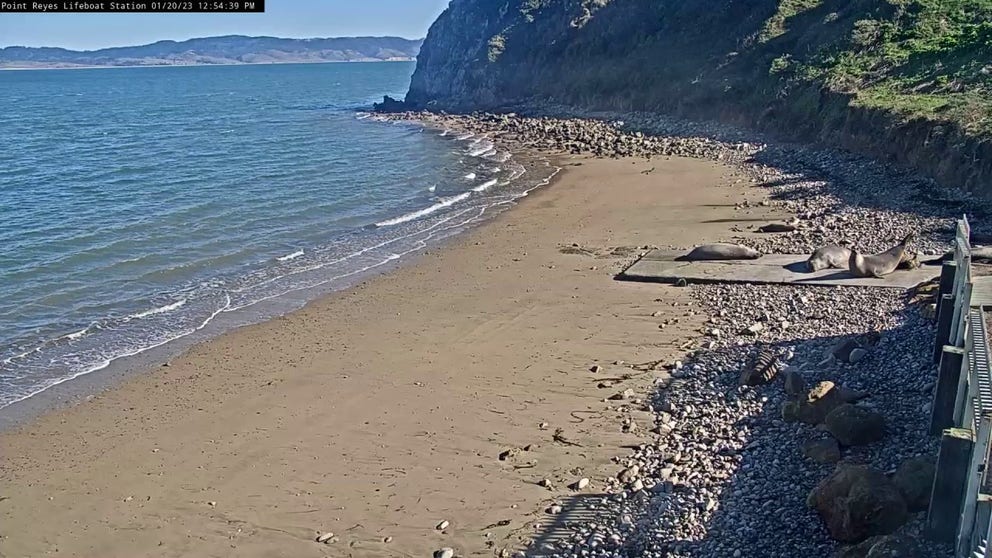Relentless Pineapple Express storms decimated California's early elephant seal pup population
Strong winds churned up high surf which washed 50 to 100 pups out into the Pacific Ocean before they learned how to swim. Experts believe the outcome could have been much worse.
Watch: Elephant seals relax on a California beach
Between December and March, northern elephant seals take over several beaches on Point Reyes National Seashore in Northern California to give birth and mate.
POINT REYES NATIONAL SEASHORE, Calif. – A parade of atmospheric river events punished California from December 26 to the middle of January, causing the deaths of at least 20 people and even leaving the early-season population of the state's elephant seal pups decimated.
Storm after storm dropped flooding rains, tropical storm-force winds whipped up mountainous waves and an entire season worth of snow fell in just three weeks. The angry ocean washed newborn seals out to sea before they learned how to swim.
Marine ecologist Sarah Codde estimated that 50 to 100 pups drowned among the three colonies at the Point Reyes National Seashore, north of San Francisco. She said the outcome could have been much worse.
DRAMATIC IMAGES SHOW DEVASTATION FROM ONSLAUGHT OF ATMOSPHERIC RIVERS SLAMMING CALIFORNIA
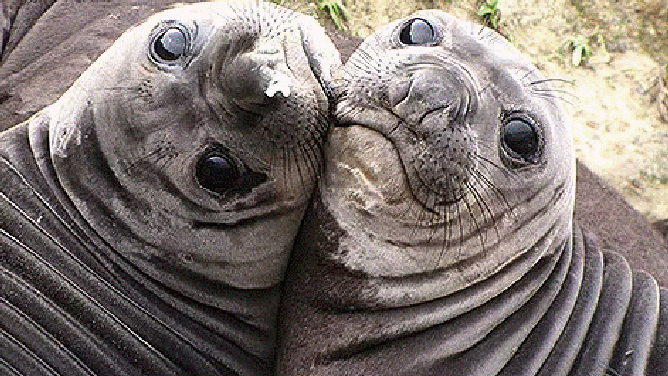
Two weaned elephant seal pups.
(NPS/ Samantha Ford NMFS Permit 17152-00 / FOX Weather)
RELENTLESS CALIFORNIA ATMOSPHERIC RIVERS DROP 32 TRILLION GALLONS OF WATER OVER 3 WEEKS
"Luckily, the storms hit during the beginning of the elephant seal pupping season," Codde said. "So, while some pups were pulled out by waves and drowned, many pups hadn't even been born yet."
The first pup of the season was born December 20th, according to the National Park Service. Codde said late January is the peak of pupping season. Females give birth to one pup and on rare occasions have twins. By February, a colony's population can soar to over 600 elephant seals.
Newborns drown after pulled out to sea by waves or flooding tides
"The pups can't swim well for the first few weeks of life," Codde said. "When large waves from storm surge crash on the beach, the strength of the water can pull the pups out to sea, and they are unable to swim back to shore."
Watch: Elephant seal gives birth to pup
On January 20, 2023, a live webcam captured an elephant seal giving birth to her pup at the Point Reyes National Seashore. Mothers are pregnant for 11 months.
This series of Pineapple Express storms was particularly devastating, she said, because they hit from the south. So the Golden State's south facing beaches were "hit pretty hard."
Codde and other seal monitors said that after the storms, many expectant seals retreated to safer beaches to give birth. They counted more than 250 cows on Gus' Cove Beach, a record for the cove.
SPECTATORS GATHER AS KILLER WHALE WASHES ASHORE FLORIDA COAST

File: Northern elephant seals on Gus' Cove Beach at the Point Reyes National Seashore.
(NPS / Sarah Allen, NMFS Permit No. 21425 / FOX Weather)
"They went to areas where the beaches are wider and there is more room to get away from the strong waves," said Codde.
The colonies lost pups over the 2021-22 winter to a tsunami and two king tides that overwhelmed the beach. Almost 1,300 were born but only 1,126 were weaned.
Back in 1998, powerful storms during the El Niño winter washed away 85% of the 350 pups.
Good news for the pups, the FOX Forecast Center says there are no atmospheric river-charged storms on the horizon for the Golden State.
HOW TO WATCH FOX WEATHER ON TV
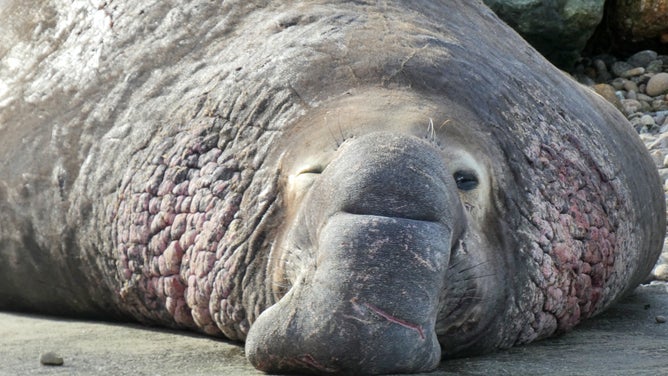
This is an alpha bull with a chest shield formed from the cornification (dead skin cells making up a physical skin barrier) of skin as well as scars from fighting.
(NPS / Marjorie Cox - NMFS Permit No. 21425 / FOX Weather)
Seals return twice a year to same beach they were born
Elephant seals return to Point Reyes' beaches every year in mid-December for birthing and mating season. Many times females "haul out" to the same beaches where they were born. Moms or cows wean their pups after a month. Then the cows head out to sea for a month or two to feed. Adult males or bull seals leave to feed shortly after. The weanlings head out by mid-April. Gestation is 11 months.
Elephant seals get their name from the male’s inflatable proboscis or nose which resembles an elephant trunk. The bull seals use it to trumpet to attract females and threaten each other. The NPS says the call can travel a mile and the males often have dominance contests, where sparring, not hugging, can be observed.
‘WE WERE RIGHT THERE WHEN IT HAPPENED’: WHALE GIVES BIRTH ON VIDEO IN ONCE-IN-A-LIFETIME SIGHTING
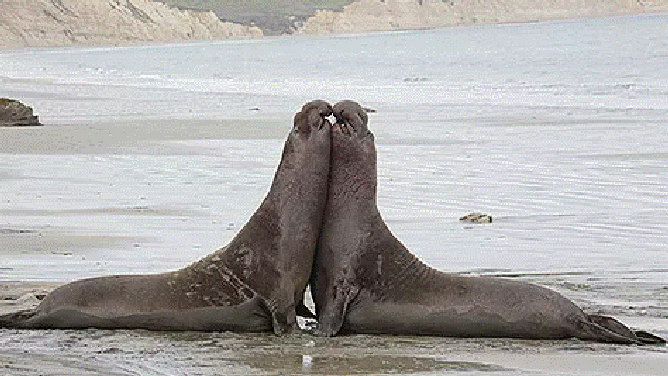
Two sub-adult male elephant seals sparring on Drake's Beach.
(NPS / Sean Pickton NMFS Permit 17152 / FOX Weather)
Nearly extinct in early 1900s
The species was hunted to near extinction in the 1800s. One blubbery bull could yield almost 25 gallons of oil. The NPS estimates that only 1,000 northern elephant seals existed by 1910. Government protections allowed the population to rebound. Today the seals are no longer classified as ‘endangered.’
The seals need that blubber to stay warm in cold waters. They spend 80% of their time at sea and about 90% of that time is underwater. They travel, eat, digest and even sleep underwater. Males migrate around 13,000 miles annually and females 11,000 round-trip.
The largest seal in the Northern Hemisphere can spend up to 30 minutes on an average dive. They surface for only 3 to 5 minutes then head back down to 1,000 to 2,000 feet again.
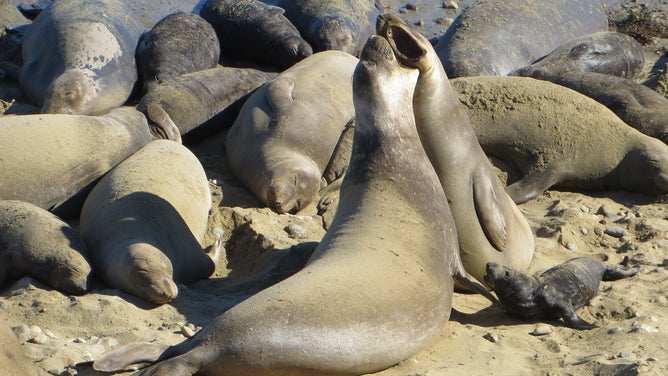
Elephant seal cows fighting next to a young pup
(NPS / FOX Weather)
The pressure at that depth actually condenses the blubber, so the mammal is less buoyant, according to the NPS. The seals carry oxygen in their blood which allows them to collapse their lungs to dive.
Underwater, the animals reduce their heart rate to 4 to 15 beats per minute. On land, their hearts beat between 55 and 120 beats per minute.
Not much light gets down to the dive depths, so they have large eyes to make out their prey. Bioluminescent sea creatures are easier to track. They also feel around for food with whiskers.
MOST EXTREME ANIMAL ENCOUNTERS CAUGHT ON CAMERA IN 2022
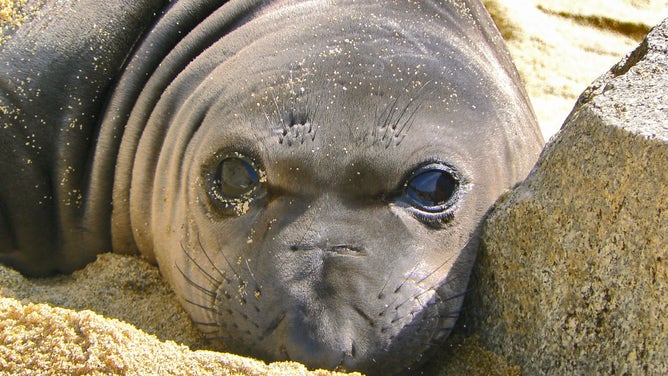
Weaned elephant seal pup.
(NPS / Heather Jensen / FOX Weather)
The seals fast while on land and can lose up to 36% of their body weight. Adult males can grow up to 13 feet long and weigh as much as a Dodge Ram pick-up, up to 5,000 pounds. Females are much smaller.
Elephant seals make a second trip to the beaches over the summer to molt. They shed fur and large patches of skin. Juveniles also return mid-September to rest and allow their bones and muscles to properly develop.
